Most construction sites need a stable ground to do their work on. The soil needs to be compressed so there aren’t any pockets of air underground that can disrupt the process.
For this to work, special construction equipment is needed to properly compact and smooth the ground.
One of the most common types of compaction equipment is the road roller. Road rollers have a long history, with some of the first being pulled by a horse and used for agricultural purposes. In fact, modern rollers are still referred to as steam rollers, from when they were powered by a steam engine.
Although the “steam” part of the name has stuck around, rollers are rarely (if ever) powered by steam and are much more specialized in the type of compacting they do. Due to their specialties, one roller won’t really work the same as another as a sheepsfoot roller is very different than a pneumatic tire roller.
Knowing about the different types of rollers is important information for a construction project. To help you choose the right machine, we’ve broken down the different types of rollers and their uses below.
Explore All Compaction Equipment
1. Cylindrical Rollers
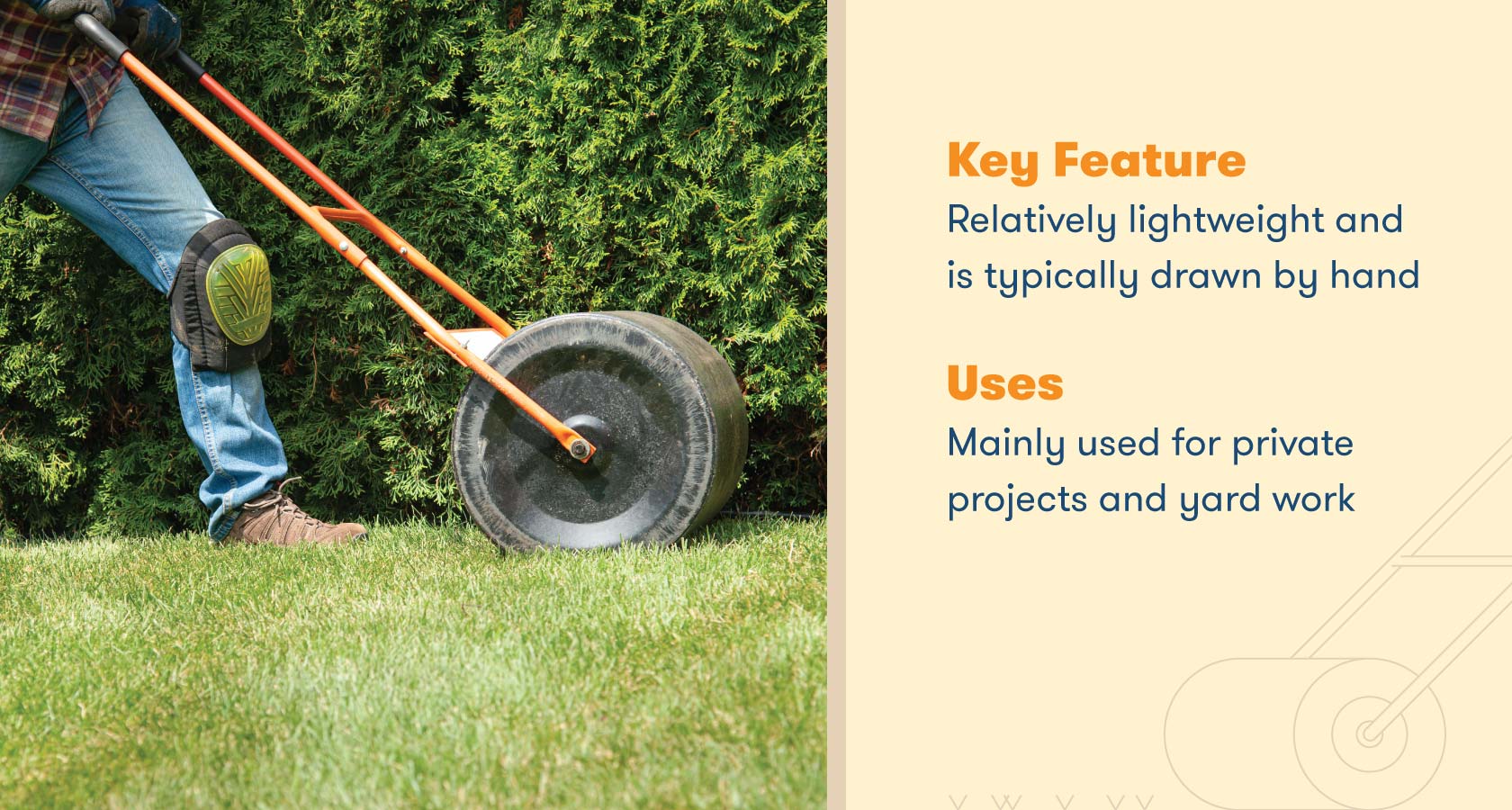
One type of walk-behind roller is a cylindrical roller. These ones are traditional in that they are relatively lightweight and are pushed by a person. All of the other types of rollers on this list have walk-behind and ride-on counterparts and are sometimes still powered by an engine.
Cylindrical rollers are used mainly for small and private projects, like yard work. Cylindrical rollers are typically 1 meter in diameter and are generally made of iron, stone or concrete.
2. Grid Rollers
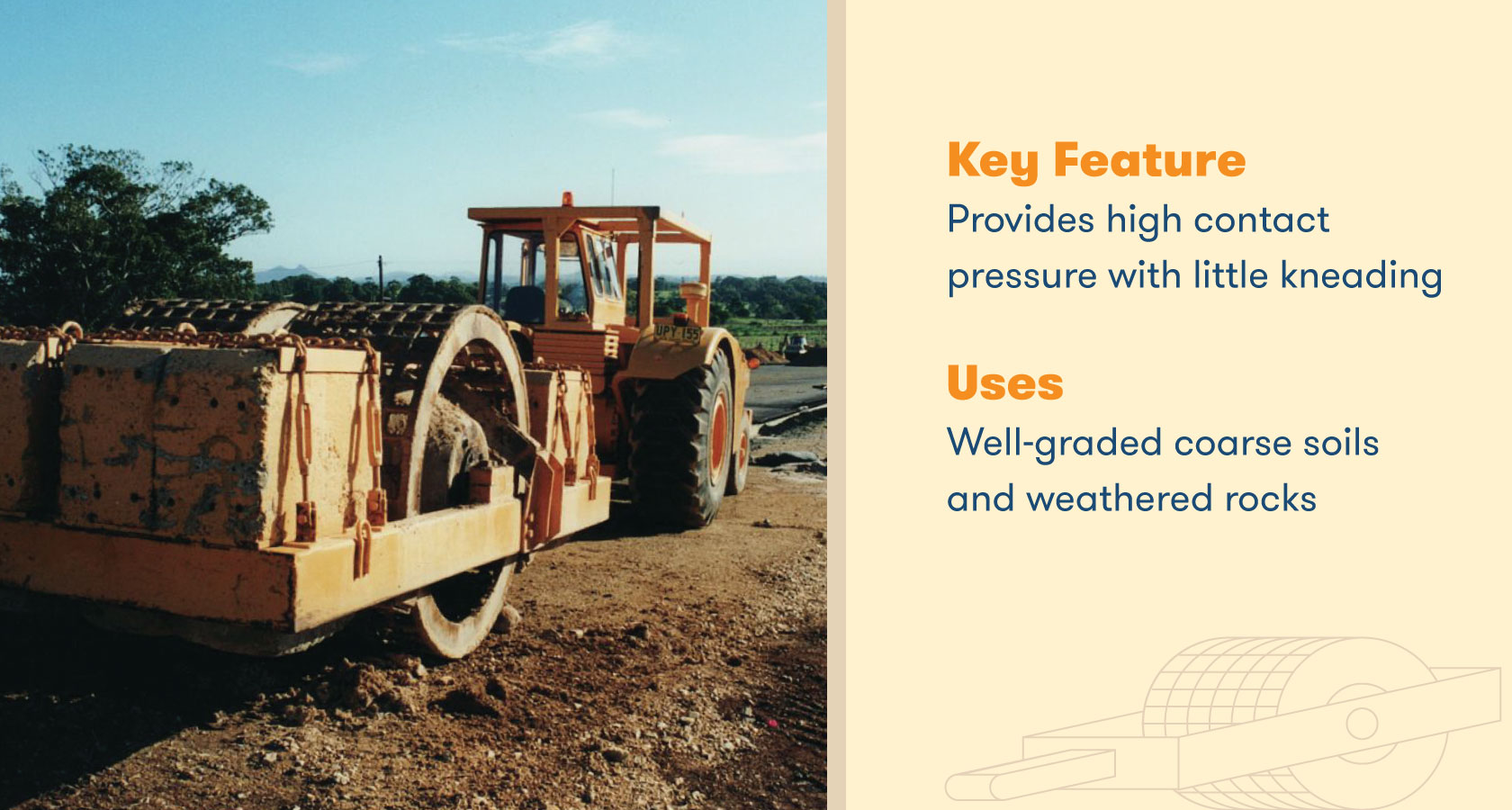
Left: “Hyster Grid type roller” by Dw1975, via Wikimedia Commons, used under Creative Commons Attribution 2.0 license.
Grid rollers are a type of roller that has a network of steel bars, which create a grid-like pattern on the steel drum. The grid may also be ballasted with concrete blocks or steel attachments for more contact pressure. These types of rollers are generally towed or pulled behind a tractor or another heavy machine.
The grid design on the cylinder drum produces a high contact pressure with little kneading action on compaction work. Because of this, they’re most suitable on well-graded, coarse soils, weathered rocks and for subgrade and sub-base road constructions.
3. Pneumatic Rollers

Pneumatic rollers, sometimes called pneumatic tired rollers, are a type of large, ride-on roller with several rows of rubber tires on the front or rear end. The rubber tires provide an 80% coverage area and uniform pressure throughout the width of the tires.
They are typically used for pavements and can help smooth out and polish a project, but are also great for cold-laid bituminous or cold mixed pavements and layers of loose soil.
4. Sheepsfoot
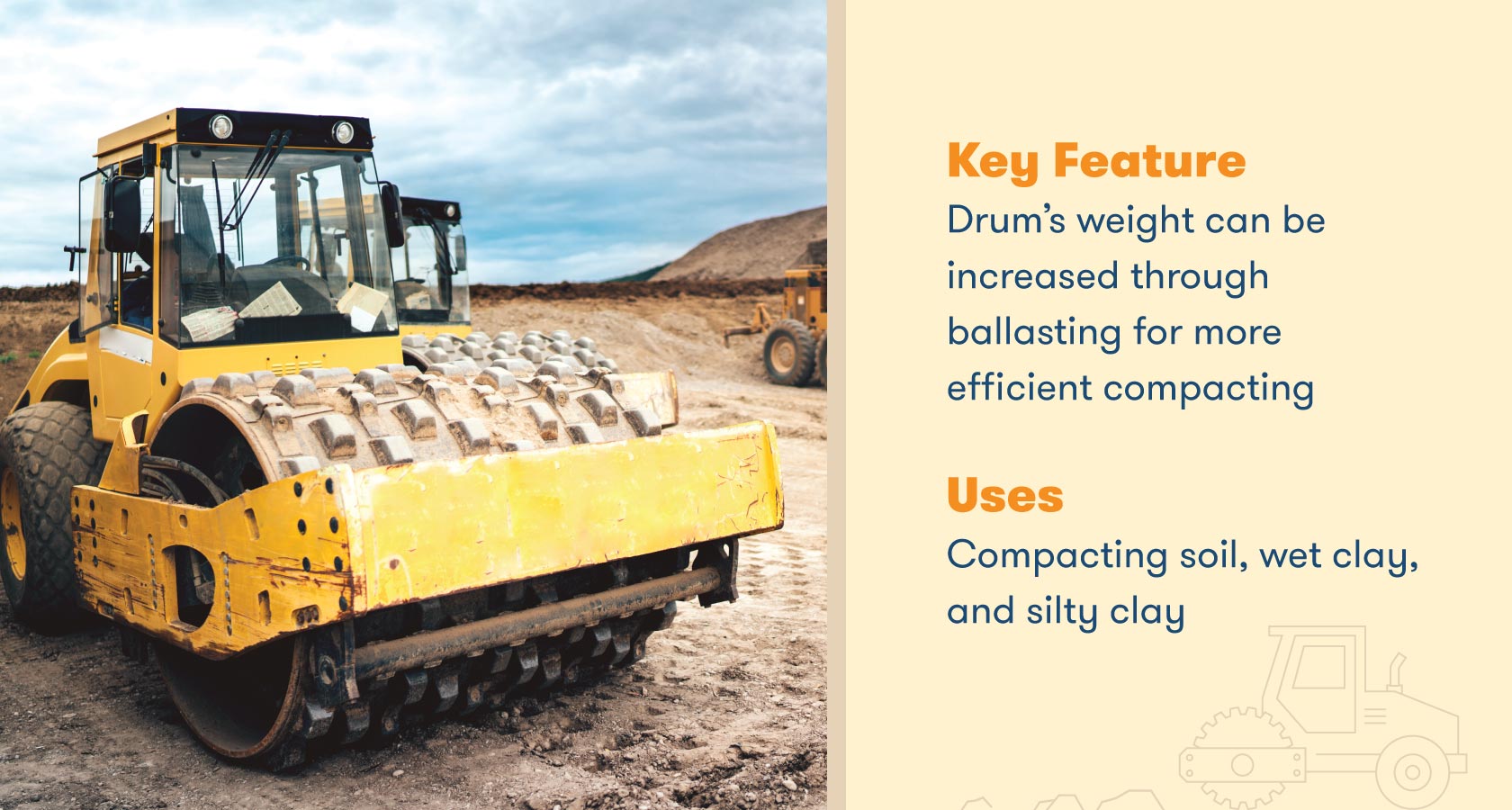
Sheepsfoot rollers, otherwise known as padfoot or tamping rollers, are rollers with many rectangular-shaped lugs, or “feet.” They’re great for compacting soil and silty clay in road construction work.
The sheepsfoot drum’s weight can be increased by ballasting it with water, damp sand, or mounting steel sections onto it, providing a more efficient compacting job.
Likewise, any projects with wet clay or other fine-grained soils at great depths should use this type of roller. You can finish off areas compacted by sheepsfoot rollers by going over them with a pneumatic roller.
5. Smooth Wheeled or Static Rollers
There are generally two types of smooth wheeled rollers: single and double drum roller. They are also known as static rollers.
Double Drum or Tandem
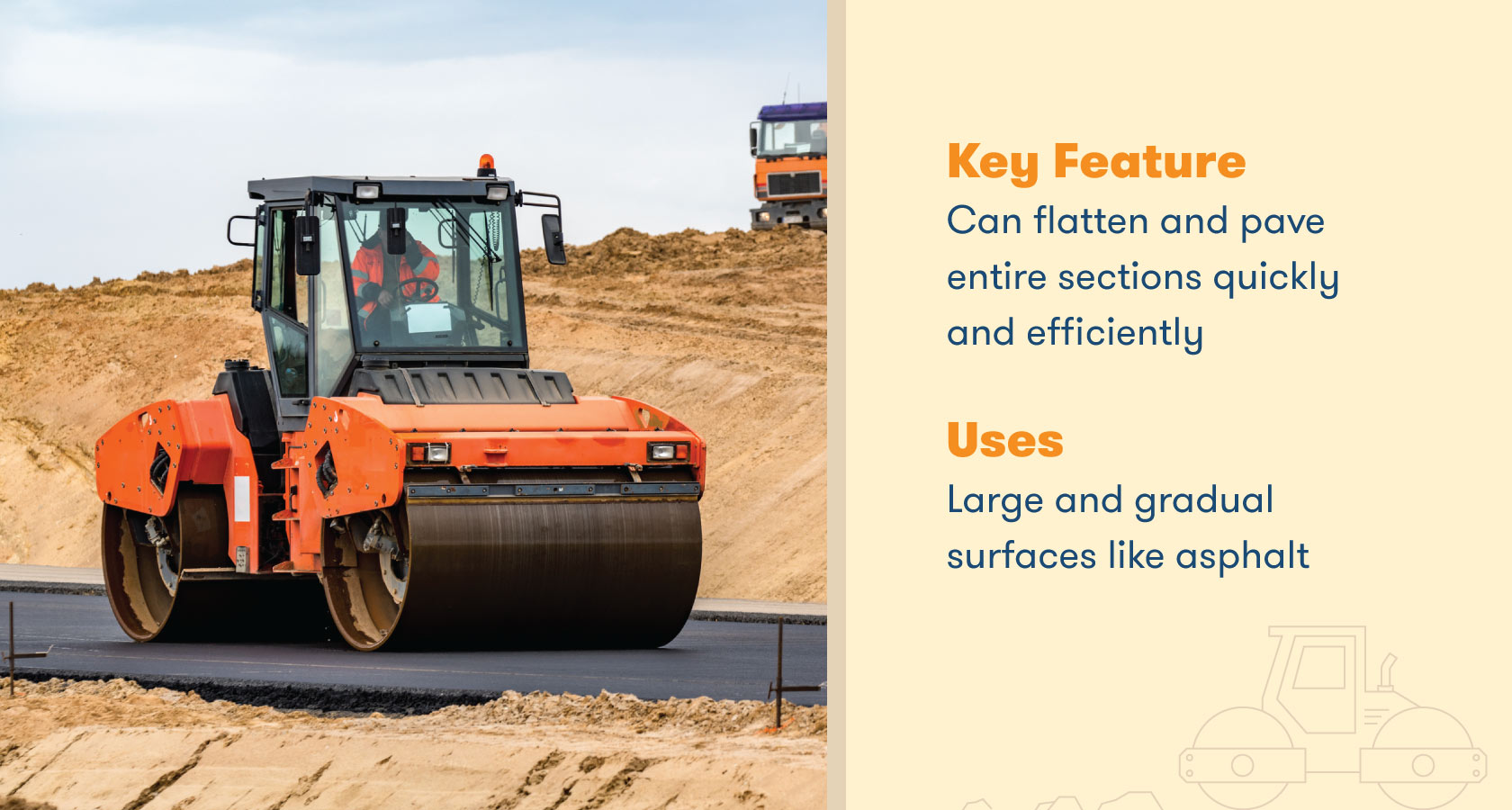
The tandem, or double drum roller, has one steel drum in the front and one in the back. As the two drums move, this moves the roller. The efficiency of the tandem roller comes from the two drums — entire sections of a highway can be flattened and paved quickly and efficiently.
These rollers are great for flat or gradual surfaces like asphalt, but because they have very little traction, they’re not recommended for anything specialized.
Single Drum or Three-wheeled
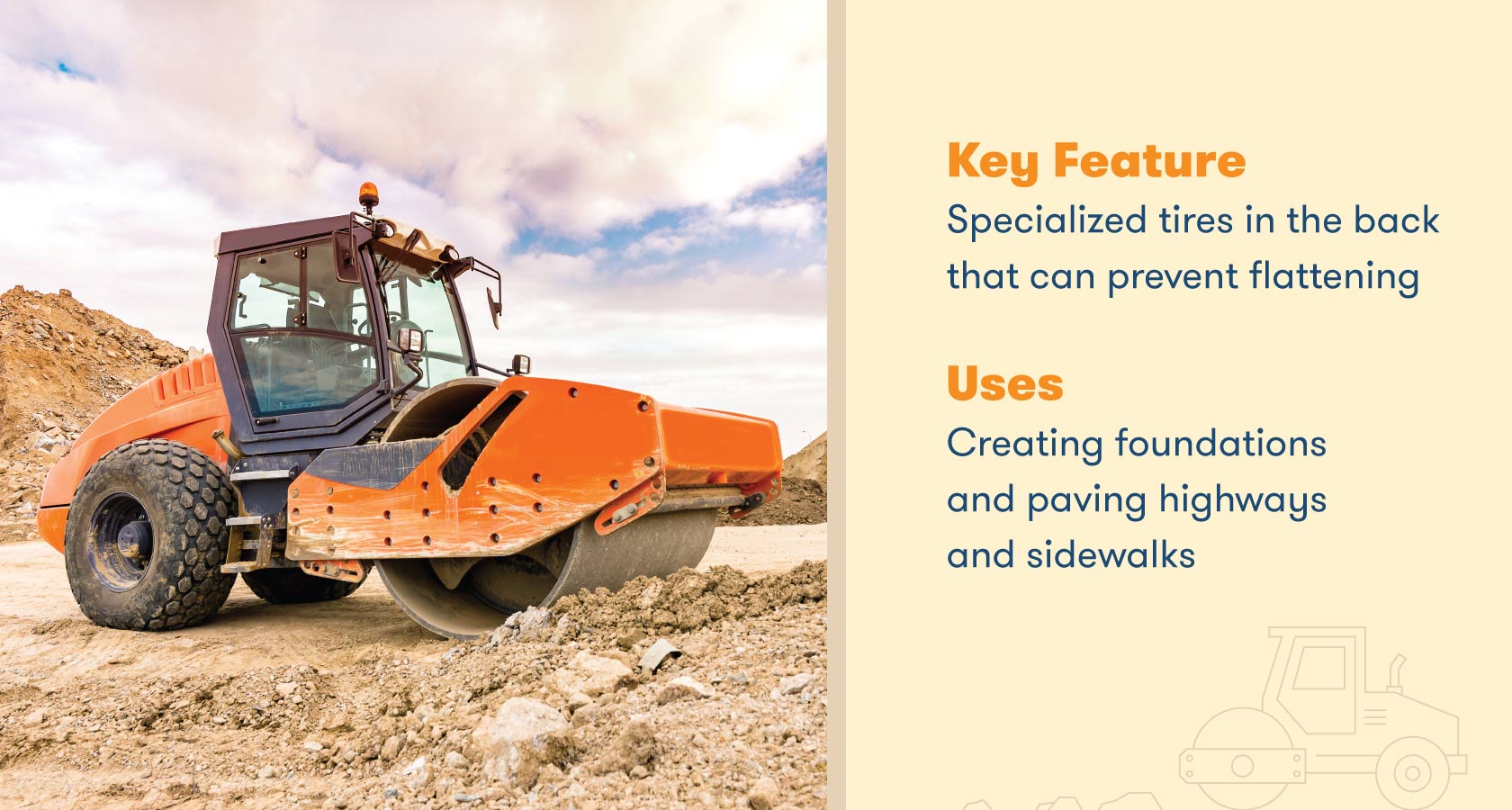
Three-wheeled or single drum rollers are some of the most common pieces of heavy-duty machinery. When people think of road rollers, they typically picture a three-wheeled roller. They typically have a steel drum in the front and two special wheels in the back that can prevent most flat tires from happening.
Single drum rollers can work in tighter spaces and more specialized projects due to their smaller size. They’re great for creating foundations for buildings and paving highways or sidewalks, but because of the extra weight in the front, they won’t roll over some surfaces.
One thing to note is that single-drum can also refer to other rollers, such as the padfoot or smooth roller. Understanding that aspect can help differentiate exactly what you need.
6. Vibratory Rollers
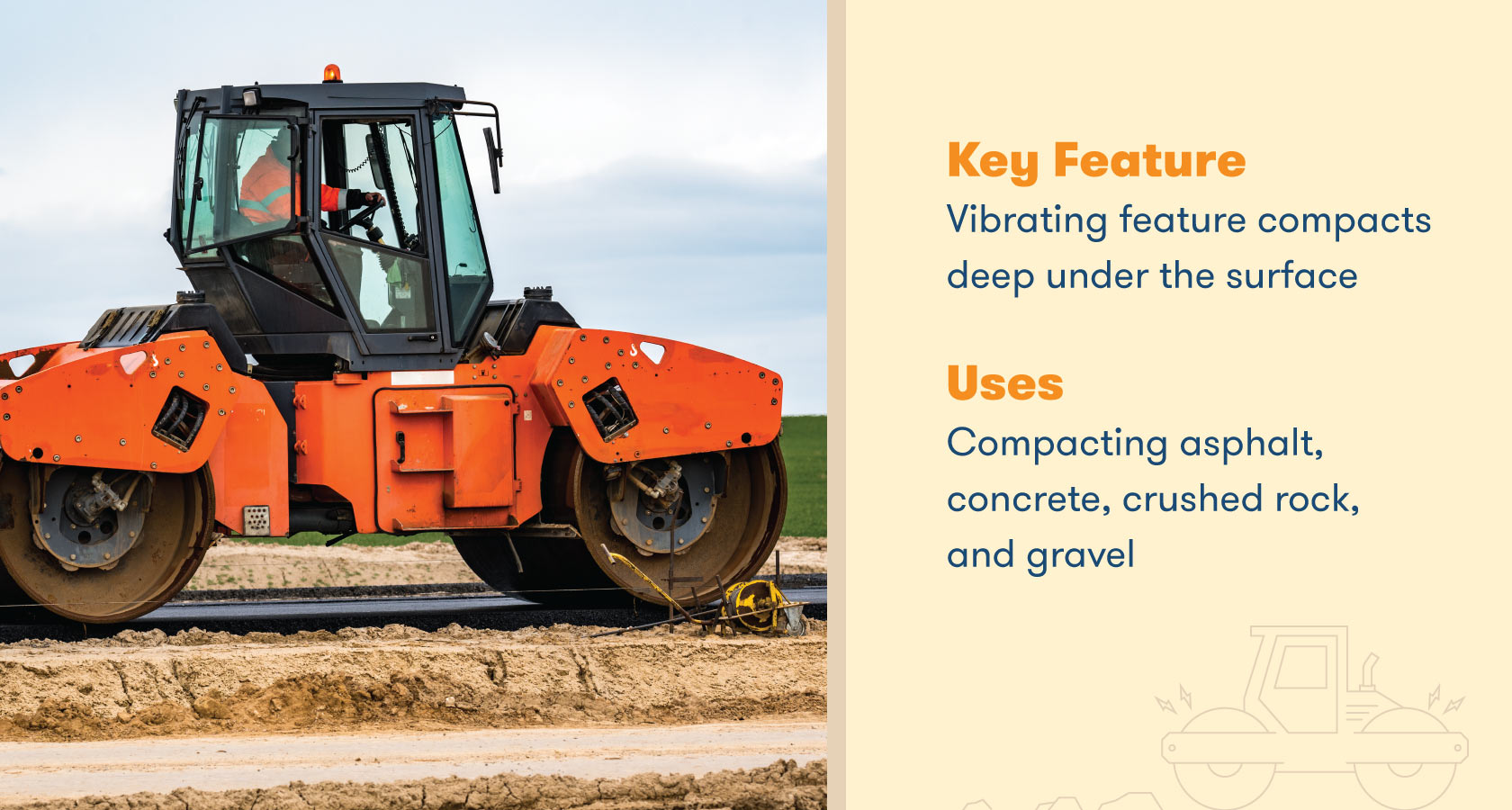
Vibratory rollers are almost identical to smooth wheel rollers (including the single and double drum) except for one major difference: they come with a specialized vibrating component. As the roller compacts and flattens the surface, it will vibrate.
Since soil, asphalt, and concrete have natural empty spaces, they can cause a building to warp and sink, causing damage to the structure. Using a vibratory roller on your construction project can help keep the building’s structural integrity. Other types of soil that vibratory rollers are great at compacting are crushed rock or gravel.
Other Types of Compactor Equipment
Rollers aren’t the only construction tools used for compaction work. Other types of compactor equipment include the rammer and the vibratory plate.
Rammers are handheld and are best used for small jobs in tight areas. Due to their comparatively lightweight, they can be hand or machine operated, which allows deep vibratory compaction.
Vibratory plate compactors are used to increase the density of a variety of soils and fill any voids. Because they are walk-behind compactors and are smaller in size, these compactors are best used for tight spaces where large equipment can’t reach.
How to Choose the Right Type of Road Roller
Choosing the right type of roller for your construction project is important, as the wrong one can result in poor workmanship, pockets of air that’ll sink the structure or uneven spaces that can be dangerous.
Figuring out the right type of roller depends on a few factors. The first of which would be the length of the project. Depending on the length, sometimes it’ll be more cost-efficient to rent a roller than outright buying one.
You’re also going to have to figure out the type of soil that’s going to be compacted. Fine-grain sand will need a different roller than clay. Plus, if you’re laying asphalt, you’re going to have to figure out if it’ll be better to have a static or a vibratory roller.
Figuring out whether you need a smooth vs padfoot roller for your project might seem difficult at a glance, but learning about the two rollers (and others) can definitely help you pick the right type of roller for your construction project.
Rollers are great at improving and repairing surfaces, making them some of the most trustworthy heavy equipment you can use on a project. Understanding the benefits of each roller can make choosing the right one for your project simpler.
Explore All Compaction Equipment